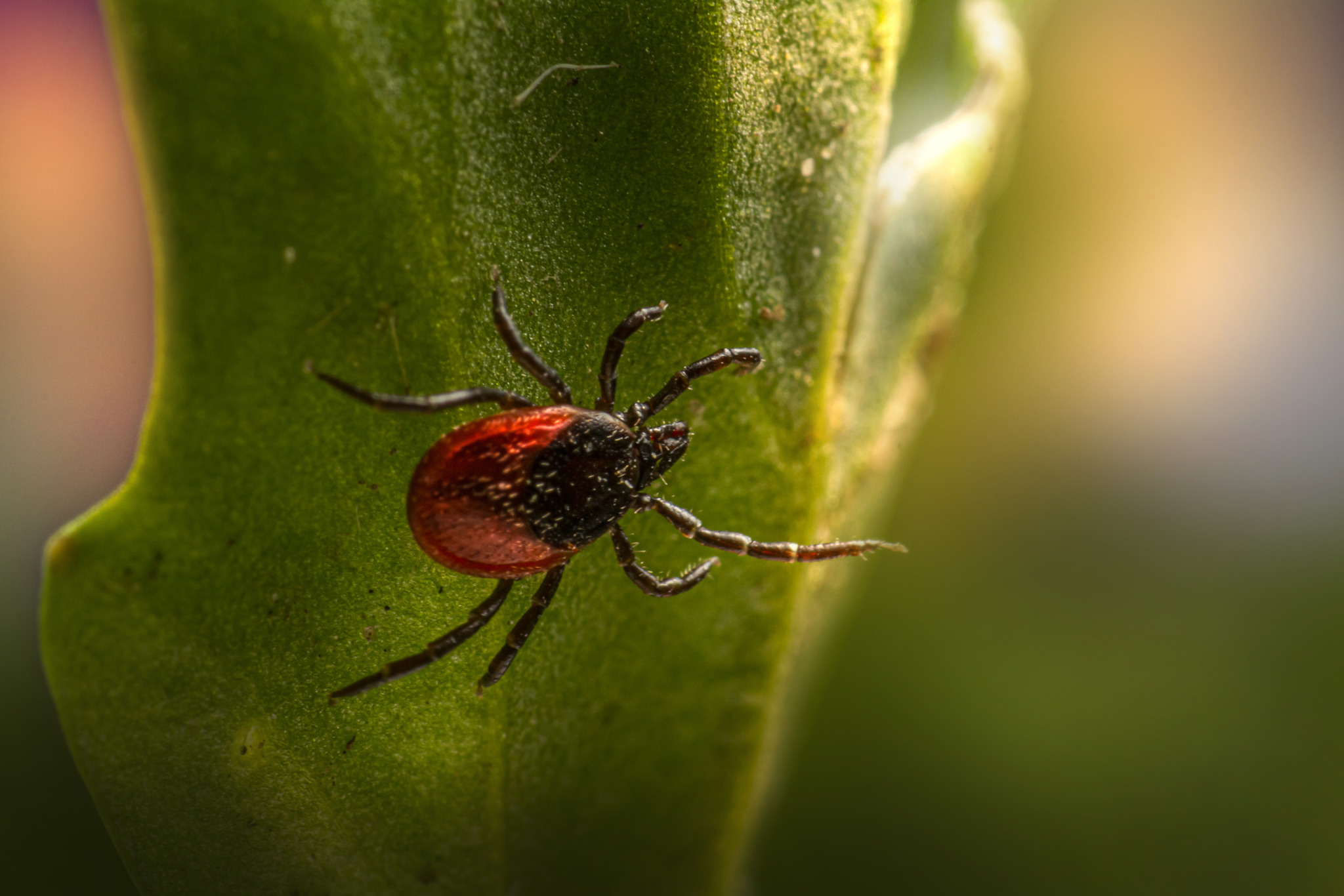Here’s a detailed field and scientific overview of the Castor Bean Tick (Ixodes ricinus) — Europe’s most widespread tick species and an important vector of several diseases. 🕷️
🕷️ Castor Bean Tick (Ixodes ricinus)
Scientific name: Ixodes ricinus (Linnaeus, 1758)
Common names: Castor Bean Tick, Sheep Tick, Wood Tick
Family: Ixodidae (Hard Ticks)
Genus: Ixodes
🌍 General Overview
The Castor Bean Tick is a hard-bodied ectoparasite found across Europe, North Africa, and western Asia.
It is the most common tick in Europe and an important vector of pathogens such as Lyme disease (Borrelia burgdorferi) and Tick-borne encephalitis virus (TBEV).
The name “castor bean tick” refers to the engorged female’s shape, which resembles a castor bean seed when full of blood.
🧬 Identification
| Feature | Description |
|---|---|
| Size (unfed) | 2–4 mm (male), 3–6 mm (female) |
| Size (engorged) | Up to 10–11 mm (female after feeding) |
| Coloration | Unfed: reddish-brown body, blackish scutum (shield); engorged: greyish or bluish-white |
| Body shape | Oval and flattened when unfed; balloon-like when engorged |
| Scutum (shield) | Hard, dark plate covering entire dorsum in males and front part in females |
| Mouthparts | Long, forward-projecting capitulum (“snout”) for piercing skin and feeding |
| Legs | 4 pairs; reddish-brown with darker joints |
Tick identification often requires magnification, as many Ixodes species are visually similar.
🐾 Hosts and Feeding Behavior
Ixodes ricinus is a three-host tick, meaning each life stage (larva, nymph, adult) feeds on a different host before molting.
| Life stage | Size | Typical hosts |
|---|---|---|
| Larva | <1 mm | Small mammals, birds, reptiles |
| Nymph | ~1.5 mm | Rodents, birds, medium mammals, humans |
| Adult | 3–6 mm (unfed) | Large mammals – deer, dogs, livestock, humans |
- Feeding duration: 3–7 days depending on stage and host.
- Females feed once, then lay eggs and die.
- Males feed briefly and often remain near females for mating.
🧫 Life Cycle
The full life cycle usually takes 2–4 years, depending on temperature and humidity.
- Eggs – Laid on the ground in leaf litter by an engorged female (up to 2,000 eggs).
- Larva – Hatches and seeks a small host; feeds and drops to the ground to molt.
- Nymph – Feeds on a second host; can transmit diseases.
- Adult – Feeds on large mammals; female mates and lays eggs to complete the cycle.
🌿 Habitat and Ecology
- Prefers humid, shaded habitats with dense vegetation, such as:
- Deciduous and mixed forests
- Woodland edges and clearings
- Overgrown meadows and parklands
- Requires high humidity (>80%) to survive off-host.
- Active from early spring to late autumn, with peaks in May–June and September–October in temperate Europe.
🧠 Medical and Veterinary Importance
The Castor Bean Tick is a major disease vector in Europe.
Human and animal diseases transmitted:
- Lyme borreliosis (Borrelia burgdorferi complex)
- Tick-borne encephalitis (TBE) virus
- Anaplasmosis (Anaplasma phagocytophilum)
- Babesiosis (Babesia divergens, B. microti)
- Rickettsioses (Rickettsia helvetica)
Symptoms after bites:
- Local redness or irritation at the bite site
- Possible transmission of pathogens if tick remains attached for >24 hours
⚖️ Conservation and Control
| Aspect | Details |
|---|---|
| Status | Common and widespread |
| Threats | None — populations stable or expanding due to milder winters and increased deer numbers |
| Control measures | Avoidance, protective clothing, tick checks, repellents (DEET, permethrin), landscape management |
| Biological control | Some predatory beetles and fungi (Metarhizium anisopliae) attack ticks naturally |
🧭 Distribution
- Range:
From Ireland and Portugal across Europe to western Russia and the Caucasus, extending into North Africa and parts of the Middle East. - Altitude range:
Up to 1,500–2,000 m, depending on humidity.
📊 Quick Facts
| Category | Details |
|---|---|
| Scientific name | Ixodes ricinus |
| Common name | Castor Bean Tick |
| Family | Ixodidae |
| Size (female) | 3–6 mm (unfed), up to 11 mm (fed) |
| Hosts | Mammals, birds, reptiles, humans |
| Diseases transmitted | Lyme disease, TBE, anaplasmosis, babesiosis |
| Active months | March–November |
| Distribution | Europe, N. Africa, W. Asia |
| Status | Very common |
🪶 Interesting Notes
- Despite their bad reputation, ticks play a role in forest ecosystems as food for birds and beetles.
- They locate hosts using Haller’s organ on their front legs, sensing CO₂, heat, and vibrations.
- After feeding, an engorged female may weigh 100 times her unfed weight.
- The Ixodes ricinus complex includes related species such as I. persulcatus (taiga tick), which replaces it further east.
Views: 1523
Subscribe to the newsletter:
